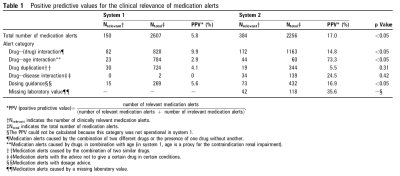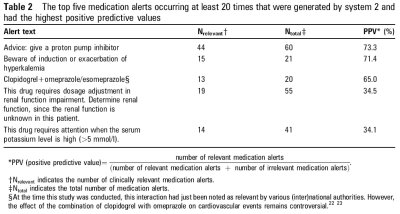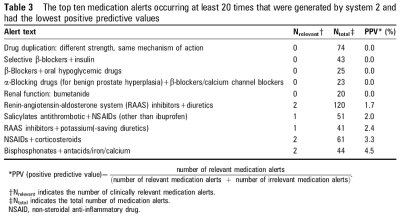Resultaten vergelijkende studie
Comparison of a basic and an advanced
pharmacotherapy-related clinical decision support
system in a hospital care setting in the Netherlands
Willemijn L Eppenga, Hieronymus J Derijks, Jean M H Conemans,
Walter A J J Hermens, Michel Wensing, Peter A G M De Smet
Conclusie
"The main conclusion of this study is that system 2 had a significantly higher PPV than system 1 (5.8% vs 17.0%; p<0.05). The study shows that system 2 was more effective and more efficient than system 1 in carrying out medication surveillance. However, the number of irrelevant medication alerts remained relatively high. To improve the PPV of system 2, the algorithms should be further optimized as follows: (1) by identifying risk modifiers from the existing scientific literature; (2) by making these additional risk modifiers electronically available; and (3) by cyclic testing of the effects of medication alerts in daily clinical practice (PDCA cycle). Our study illustrates and corroborates the need to test technical improvements in information technology in circumstances representative of daily clinical practice. This type of research will contribute to further optimization of CDSS. It should also be kept in mind that maintenance of a knowledge database is a continuous process."
Download de volledige publicatie
Resultaten
Table 1 - Positive predictive values for the clinical relevance of medication alerts

(klik voor vergroting)
Table 2 - The top five medication alerts occurring at least 20 times
that were generated by system 2 and
had the highest positive predictive values

(klik voor vergroting)
Table 3 - The top ten medication alerts occurring at least 20 times
that were generated by system 2 and
had the lowest positive predictive values

(klik voor vergroting)
Table 4 - Comparison of basic and advanced medication alerts in system 2

(klik voor vergroting)
|